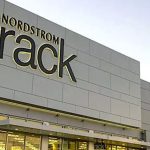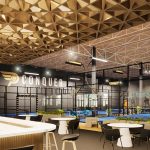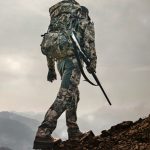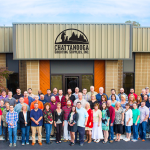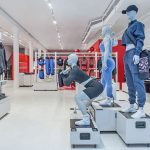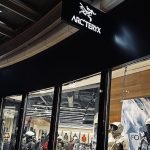Amer Sports Oyj lowered its guidance for the second time this year after reporting a 6% decline in net sales in the third quarter to 433.2 million ($595.3 mm) as rapid growth in outdoor footwear and apparel and a solid performance from its ball sports segment were overwhelmed by a shift in winter equipment shipments to the fourth quarter and plummeting consumer sales of fitness equipment.
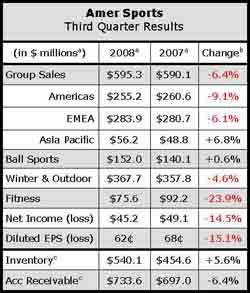
The declines come as the company works to reduce its working capital and raise cash to pay down 448 million in short-term debt. The not-so-bad news was that net sales were off just 2% when measured in local currencies. The good news was that Amer expects to more than make up missed ski and boot shipments in the fourth quarter and the companys outdoor brands, Salomon and Arcteryx, continued to grow at a 20%-plus pace.
Company-wide gross profits declined 3% in the quarter to $186.2 million ($281.2 mm). EBIT declined 13% to 51.5 million ($77.8 mm). The declines came despite the elimination of 568 jobs, or about 8.5% of payroll compared to last year, including 295 jobs in the Americas.
Amer remains highly leveraged, with 629 million ($905.8 mm) in total debt, including 448 million ($645.1 mm) of short term debt, which includes a 75 million ($108 mm) Finnish bond that comes due in May. The company said it is focused on reducing its gearing ratio, which measures the ratio of debt minus cash and liquid assets to shareholder equity, from 124% to between 60% to 80% “as soon as possible.” To do that it will focus on reducing its working capital. While the company ended the quarter with inventories valued at 378.4 million ($544.9mm), up 5.6% from a year earlier, it expects inventory levels to fall below last years level by winters end.
“On our agenda for the remaining part of the year, but likewise also so the next few years, it’s clearly to improve our balance sheet,” Talermo said. “It’s very, very important for us to reduce the gearing going forward.”
Amer reduced its full-year guidance for EBIT to between 80 million to 90 million, down from its latest estimate of 90 million to 105 million. Early in the year, Amer projected EBIT of 100 million to 130 million. The latest estimate excludes a capital gain of 13 million from the sale earlier this year of the companys headquarters building.
“I would say the outlook is more uncertain than weve ever had before, just simply because we dont know how consumers are going to react in the month to come, and therefore of course we are more blind, so to say, than before,” Talermo said.
In the companys Ball Sports segment, Racquet Sports net sales rose 7% to 56.7 million ($77.9 mm), Team Sports rose 15% to 38.0 million ($52.2 mm), while Golf fell 5% to 15.9 million ($21.8 mm), due in part to the decision to license the business in Japan and stop making golf balls for the OEM market in the U.S. The company said the Wilson business remained flat in local currency terms over the nine-month period ended Sept. 30, 2008. On a local currency basis, EMEA sales rose 5%, while Asia-Pacific sales fell 13% and sales in the Americas were flat.
Racquet sales were driven by the top-of-the-line K Factor racquet now in its third and last year. Team sports continued to recover from early this year, with help from weak comps in Q3 2007 and “very, very strong” sell-in of baseball products for the 2009 season. EBIT for the ball sports segment improved 27% in local currency terms to 6.6 million ($9.1 mm), but is down 8% for the first nine months to 33.6 million ($51.1 mm).
The real damage was in the Fitness segment, where net sales fell 18% to 55.0 million ($75.6 mm) on a local currency basis due to an unexpected and rapid decline in consumer sales in North America.
Amer Sports said Precor’s commercial business remained solid through the third quarter. The company has not received any order cancellations from the major fitness clubs it ships to directly.
Those clubs account for 58% of segment sales and appear to be moving forward with expansion and renovation plans to gear up for the key New Years season.
Talermo said two trends are hurting the consumer market. First, the decline in housing prices has hurt sales to homes. Secondly, two of the companys dealers have filed bankruptcy and other dealers are also experiencing financial difficulties. In Europe, by contrast, sales to retailers are up 40% this year.
EBIT for the fitness segment plummeted 63% to 2.8 million ($3.8 mm) in the quarter, and dropped 72% for the first nine months. The company plans to cut the workforce at Precors headquarters in Seattle at a cost of a few hundred thousand dollars. Talermo said he does not see the consumer side of the business turning around for “another few years.”
Net sales in local currency terms fell 2% for the Winter and Outdoor segment for the quarter, but are still up 5% over last year for the first nine months of the year. That decrease consisted of a decline of 13% for Winter Sports Equipment (Atomic, Salomon skis, bindings, etc) to 134.8 ($185.2 mm), a 26% increase in Apparel and Footwear (Salomon and ArcTeryx) to 87.4 million ($120.1 mm), a 14% decline for Cycling (Mavic) to 23.5 million ($32.3 mm), and a 5% increase for sports instruments (Suunto) to 21.9 million ($30.1 mm).
Across the entire Winter and Outdoor segment, EBIT fell 3% in the quarter to 45.7 million ($62.8 mm) in local currency terms, but has swung into the black over the first nine months compared to a 14.3 million ($19.2 mm) loss for the same stretch in 2007. The third quarter decline should reverse itself in the fourth quarter as major shipments go out the door. The company completed a restructuring of the Winter Sports Equipment business, which included the acquisition of a Bulgarian ski vendor in September, that should lead to material improvements in profitability next year.
“The high-season for winter sports equipment shipments to retailers started somewhat later than last year and consequently our sales in local currencies were 13% lower in the quarter compared with last year,” said Talermo. “Thanks to clearly more pre-order deliveries booked for Q4 and as a result of already completed profitability-improving measures, the Winter Sports Equipment business is set to improve its profitability substantially already this year.”
Specifically, the order book for Winter Sports Equipment in the fourth quarter is up 14% from a year ago. Talermo said that reflected a shift in pre-season orders from dealers in the plains states to dealers in mountain resort areas, who typically defer delivery until November. Talermo declined to say whether the business would become profitable this year.
He said the company has not shipped more product than last year, but that more of it is fresh, which has stimulated dealer demand. He called out the high-end Doubledeck ski as having a particularly strong sell-in. Amers ownership of two ski plants, two boot plants and two binding plants, all in Europe, position it to win market share should good snow spur replenishment orders.
Talermo said he thinks the inventory levels at retail are in good shape, especially in the mountain areas. He said that the dealers, regardless of the weather, will take the majority of the orders in the upcoming four weeks. He also said a 14% decline in pre-season orders and low retail inventories in the U.S. make order cancellations less likely.
“I think there is more open to buy opportunities than cancellation,” said Talermo.
Apparel and footwear sales were propelled primarily by footwear, including solid growth in Central Europe, where Salomon is the fastest growing brand in outdoor footwear. Footwear sell-through by U.S. and European dealers was “solid.” Moreover, pre-orders for Spring 09 are growing at a double-digit pace over last year.
The sell-in of Salomon and Arcteryx products continues to be strong, and pre-orders for spring/summer 2009 are growing at a double-digit pace. Due to the increased costs in Chinese manufacturing, a material part of the sourcing of products is planned to be moved to other Asian countries within the next few years.
The sales decline at Mavic was attributed to supply chain constraints-namely a surge in big OEM orders very late in the third quarter. Mavic was unable to fulfill a few unexpected OEM orders for new product, but it remains profitable. Sports instrument growth was driven by outdoor and training products and could have been better if not for declining sales of dive computers, a business closely tied to declining resort travel.


